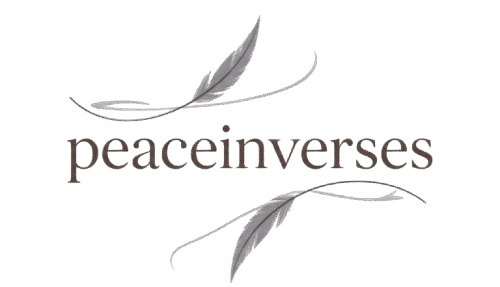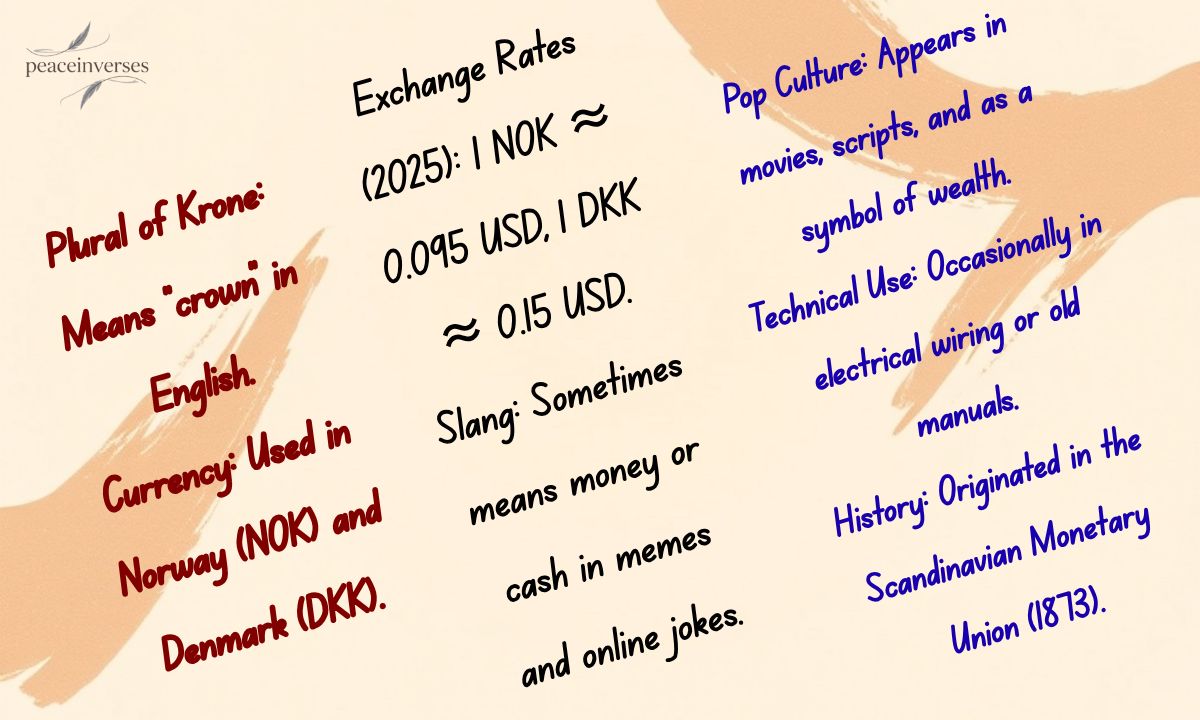Have you ever wondered what kroner really means? It’s more than just a word you see on Norwegian or Danish money. Depending on context, it can refer to currency, slang, or even pop culture references.
From Scandinavian crowns to playful online jokes, kroner carries a rich history and cultural significance. Whether you’re traveling, studying languages, or exploring films, understanding kroner helps you see how one small word connects money, heritage, and culture.
What Is Kroner? Definition and Overview
Kroner is the plural of krone, which literally means “crown” in English. It is primarily used as a currency in Scandinavian countries. The word also appears in slang, films, and technical contexts. Its meaning shifts depending on location and usage.
Beyond money, kroner can symbolize heritage, wealth, and culture. It appears in online communities, creative media, and sometimes technical manuals. Understanding kroner helps in travel, reading, or learning about Scandinavian culture. The word connects economy and identity across regions.
Kroner Meaning in Currency 🌍
Norwegian Kroner (NOK)
The Norwegian krone is Norway’s official currency. Its symbol is kr, and the code is NOK. It replaced the speciedaler in 1875. The currency is subdivided into 100 øre, though coins are rarely used today.
- Managed by Norges Bank
- Used in mainland Norway and territories like Svalbard
- One of the most traded Nordic currencies
- Exchange rates vary daily against USD and Euro
Danish Kroner (DKK)
The Danish krone is Denmark’s national currency. Its symbol is kr, and the code is DKK. Introduced in 1875, it replaced the rigsdaler. The DKK is pegged to the euro via ERM II.
- Managed by Danmarks Nationalbank
- Used in Denmark, Greenland, and the Faroe Islands
- Subdivided into 100 øre
- Currency value moves with the euro while retaining independence
Comparing Norwegian and Danish Kroner
| Feature | Norwegian Krone (NOK) | Danish Krone (DKK) |
| Country | Norway | Denmark |
| Symbol | kr | kr |
| Code | NOK | DKK |
| Introduced | 1875 | 1875 |
| Managed by | Norges Bank | Danmarks Nationalbank |
| Subdivision | 100 øre (not in use) | 100 øre |
| Peg to Euro | Free-floating | Pegged (ERM II) |
- Exchange rates change daily.
- Travelers should always check forex rates before converting.
Kroner vs Euro
Norway did not adopt the euro because it is not an EU member. Denmark is in the EU but opted out, keeping the DKK. Both countries maintain their own monetary systems.
- Conversion (2025 approx.):
- 1 NOK ≈ 0.095 USD
- 1 DKK ≈ 0.15 USD
- 1 NOK ≈ 0.13 EUR
- 1 DKK ≈ 0.13 EUR
- 1 NOK ≈ 0.095 USD
- Always verify live rates before exchanging money
Kroner Meaning in English and Slang 💬
Standard English Meaning
In English, kroner generally refers to money. It is the plural of krone, meaning “crowns”. The term appears in travel, commerce, and daily conversations. Example sentences make the meaning clear and practical.
- “She paid 500 kroner for the hotel room.”
- “The souvenir cost just 20 kroner.”
- Symbolizes sovereignty and heritage
- Widely recognized in finance and travel contexts
Kroner in Slang
Kroner also appears as playful slang, mostly online. It often means cash or coins, especially in memes. The word is popular in youth culture and social media references.
- Originates from online communities and travel jokes
- Urban Dictionary sometimes calls it “Viking cash”
- Example: “Got some kroner for lunch?”
- Shows how words evolve beyond traditional currency
Kroner in Film and Pop Culture 🎬

Kroner appears in movies, scripts, and subtitles, especially in Scandinavian settings. It helps create authenticity for characters and props. The currency often shows realism in storytelling. Audiences notice when the details match.
Sometimes, Kroner is used as a name or a symbol of wealth and royalty. Filmmakers include it to connect culture and history. Props like banknotes or coins make sets more believable. The currency also appears in subtitles for translation accuracy.
Kroner Meaning in Electrical and Technical Context ⚡
Kroner occasionally appears in electrical manuals, wiring diagrams, and connectors. It is rarely mainstream but shows the adaptability of the term. Some old manuals borrowed it from foreign sources. Technical workers may recognize it as shorthand.
Though not common, the term may also refer to tools or devices in European contexts. It can appear on labels or product branding. Awareness of this usage helps avoid confusion in technical environments. It shows the word’s versatility beyond money.
Kroner in Regional Languages 🌐
Kroner Meaning in Hindi
In Hindi, क Kroner (pronounced “kroner”) generally refers to Scandinavian currency. Travelers or businesses often encounter this in exchange contexts. The term is understood in the financial and cultural sense.
It is commonly used in travel, remittances, and online discussions. Currency exchanges and travel guides often mention kroner. The word links India to European financial systems. Its pronunciation and spelling remain consistent in most references.
History of Kroner 🏛️
Kroner originated in the Scandinavian Monetary Union of 1873. Denmark and Sweden, later joined by Norway, adopted krone/krona under the gold standard. This unified approach simplified trade and travel.
The union dissolved during World War I, but kroner survived as separate national currencies. Today, it symbolizes heritage, stability, and sovereignty. The crown meaning continues to reflect national identity. It remains a cultural and historical marker.
Kroner Exchange Rates and Value 💱
Understanding kroner exchange rates is important for travelers and businesses. The value changes daily based on market conditions. Both NOK and DKK have a strong international presence.
Approximate 2025 rates:
- 1 NOK ≈ 0.095 USD
- 1 DKK ≈ 0.15 USD
- 1 NOK ≈ 0.13 EUR
- 1 DKK ≈ 0.13 EUR
Tips for travelers:
- Always check live forex rates.
- Use authorized exchange centers.
- Avoid large cash transactions without verification.
- Consider local bank fees and conversion rates.
Frequently Asked Questions
What does kroner mean?
Kroner is the plural of krone, which means “crown”. It is mainly used as currency in Norway and Denmark. The word can also appear in slang, films, or technical contexts. Its meaning depends on the situation.
Difference between Norwegian and Danish kroner?
Norwegian kroner (NOK) is free-floating in value. Danish kroner (DKK) is pegged to the euro. Both currencies were introduced in 1875 and share the same symbol, kr. The main difference is their exchange rate stability.
Symbol “kr” explained?
The symbol kr stands for kroner or krone. It works like $ for dollars. Both NOK and DKK use the same symbol. It is commonly displayed on banknotes, coins, and pricing.
Exchange rates with USD?
1 NOK ≈ 0.095 USD, while 1 DKK ≈ 0.15 USD (2025). Rates fluctuate daily with market conditions. Travelers should check live forex rates before exchanging. Using authorized banks or exchange centers is recommended.
Why kroner is still used instead of euro?
Norway is not part of the EU, so it keeps NOK. Denmark opted out of the euro and continues using DKK. Both countries retain national identity and monetary independence. Kroner reflects heritage and sovereignty.
Conclusion
Kroner covers currency, slang, film, and technical uses. It is most commonly recognized as money in Norway and Denmark. The term also shows up in online jokes, movies, and some electrical or technical contexts.
Its meaning carries cultural and historical significance. For travelers, learners, or enthusiasts, knowing kroner helps in understanding finance, heritage, and everyday conversations. It links history, identity, and practical use across Scandinavia.

